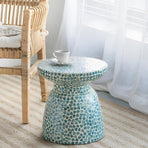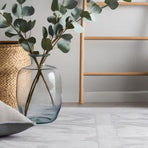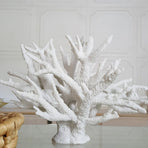Maximize your petite sleeping space with style and functionality.

Small bedrooms are often underestimated and unfairly labeled as “challenging” or “cramped,” but the truth is, these compact spaces hold incredible potential when you look beyond their size. With the right small bedroom decorating ideas, from choosing smart furniture to finding clever storage spots, any small space can feel roomy and stylish without losing an inch of function.
If you’re feeling overwhelmed or uninspired by your room’s limited space, you’re not alone. To help, we’ve gathered practical tips to create an airy bedroom that’s easy on the eyes. Learn how to use vertical space, make small adjustments, and arrange furniture smartly to stretch your space and make your small bedroom feel more open and inviting.
Small Bedroom, Big Style: Clever Decorating Hacks for Tiny Rooms

Optimize Your Small Bedroom Layout
The layout is the backbone of any room’s design, and in a small bedroom, it matters even more. Limited floor space can make the room feel cramped or cluttered, so how you arrange your furniture is key to making it both functional and inviting.
One of the best small bedroom layout ideas is to place your bed against the longest wall. This frees up the most floor space and creates a natural focal point, setting the tone for the rest of the room. Once the bed is in place, pieces like nightstands, lamps, and storage furniture can fall into place more naturally
Think of the bed as the heart of the room, and let the rest of the design flow from there. If your room has a closet, try to arrange furniture around the perimeter so it doesn’t block access or interrupt the walking flow. Even small tweaks — like changing angles or choosing slim-profile furniture — can dramatically open up a small bedroom and help it feel more spacious and well-designed.
Let Imperfections Shape Your Small Bedroom Design
Instead of fighting the awkward angles or low ceilings of your small bedroom, build your design around them. An off-center window? Frame it with curtains that stretch across the whole wall, giving the illusion of symmetry.
A slanted ceiling? Embrace it by painting it a slightly deeper tone than your walls for cozy contrast. When you work with the quirks instead of hiding them, your room gains character. Sometimes the charm of a small space isn’t in making it look bigger, it’s in making it look lived-in and unique.
Use Bedding Layers to Anchor Your Bed
Since the bed often dominates a small room, don’t try to make it blend in, make it the visual anchor. Layer it with a textured blanket or quilt, add contrasting sheets, then pile on pillows in varied sizes and fabrics.
A well-styled bed gives the room polish without needing much else. Add a tray or low bench at the foot of the bed to give it structure and prevent the space from feeling like “just a mattress in a box.” In small rooms, layers add not just comfort, but a sense of intentionality and depth.

Use Rugs to Expand the Space
An area rug can anchor furniture and give your small bedroom more visual breathing room. It might seem counterintuitive when floor space is limited but a rug that fits the room’s scale and style actually enhances the space visually.
Follow scale rules and placement tricks to open up the layout. If it’s too large, it can overwhelm the space; too small, and it may look like an afterthought.
A good rule is to have the rug extend about two-thirds under the bed. This not only grounds the layout but also adds a sense of structure and flow, making your small bedroom feel more open and cohesive.
Shop Rugs: Area Rugs for Bedrooms
Use Multifunctional Furniture to Save Space
In a small bedroom, every piece of furniture should ideally do more than one job. That means saying goodbye to bulky furniture pieces and bringing multifunctional furniture for small bedrooms, that pull double duty.
A nightstand with storage compartments, a fold-out desk that can be tucked away when not in use, or an ottoman that doubles as a coffee table and extra seating. These clever furniture options help maximize every inch of your bedroom. Think of each piece as doing double duty, and great choices for maximizing every inch of your small bedroom.
Shop Multifunctional Furniture: Storage Benches, Nightstands, Ottomans
Create Zones Within A Small Bedroom
Even small bedrooms can be divided into areas for different purposes. A window nook can be turned into a mini garden or meditation spot with a cushion and plants. Even a bedside corner can have a small desk or vanity, if you keep it minimal. Using rugs, lighting, and furniture placement to “break up” the room gives your brain a sense of spaciousness because it thinks it’s moving through different rooms, not just one tiny box.
Use Vertical Space: Shelves, Hooks, and Mirrors
When you’re working with a small bedroom, floor space is limited, but your walls offer plenty of room to expand your storage and décor options. Install wall-mounted shelves for books, plants, or decorative items, or lean a stylish ladder against the wall to hang accessories and add visual interest.
Wall hooks are perfect for organizing accessories like hats, bags, or even jewellery. Whether it’s a large full-length mirror or a series of smaller, decorative mirrors, they can work wonders to make your bedroom feel larger and more open.
Shop Wall Ideas: Wall Mirrors, Shelving, Storage Ladders
Use Ceiling Lighting as a Focal Point
Most small bedrooms focus all their energy at eye level. But the ceiling is a largely untapped surface. Painting it a soft color, adding a subtle pattern, or installing an eye-catching light fixture (like a sculptural pendant or a beaded chandelier) draws the eye upward and makes the room feel more dynamic.
You can even hang lightweight paper lanterns or fabric canopies to add softness and a sense of whimsy. Ceiling decor creates a sense of height and surprise that small rooms need.
For those who prefer the coziness of table lamps, choosing slim-profile or compact designs ensures the nightstand won’t feel cramped or overcrowded. Alternatively, a stylish floor lamp can provide ample reading light while occupying minimal floor space and leaving surfaces open for daily necessities.
Shop Lighting: Pendant Lights for Small Bedrooms, Floor Lamps for Bedroom.
Try a Tone-on-Tone Color Palette
In a small room, going all-in with one hue can make the space feel cohesive rather than chopped up. Use different shades and tones of the same color to creates a cohesive, uninterrupted look that makes a small bedroom feel larger than it is.
When walls, furniture, bedding, and accessories harmonize around one color family, it reduces visual fragmentation that can close in a space.
Layer textures in the same tone using linen curtains, velvet pillows, matte pottery to add dimension. It’s a bold move that oddly opens the room up by removing contrast and visual noise, giving the eyes a single, comforting field to absorb.
Use Horizontal Lines to Visually Widen the Room
While vertical storage is critical, horizontal lines expand your room visually. Floating your bed or desk a few inches from the walls creates negative space that prevents the room from feeling cramped. Paint horizontal stripes or install shelves that run the length of the room to trick the eye into seeing wider dimensions.
Using long, low furniture rather than tall pieces draws the eye sideways and prevents the room from feeling boxed in. Horizontal flow tricks the brain into thinking the room is broader than it really is. This breathing room around furniture makes a big difference in small spaces.
Use Color-Blocking Tricks for Visual Space
Small bedrooms often struggle with feeling boxy or closed in, since all four walls and the ceiling are so close together. Color-blocking breaks that boxiness by creating visual “breaks” or zones that encourage the eye to move differently around the room. When working with a small space, the colors you choose can do far more than just beautify, they can reshape the way your space feels and is experienced.
Instead of painting everything one color, use bold color-blocking on walls or ceilings to visually “push” and “pull” parts of the room. Using a deep color on the back wall draws your eyes in, making the room feel cozy but also like there’s more space in front. You can also extend this idea by painting a stripe or two across the room horizontally or vertically to trick the eye into seeing the room as bigger, taller, or more layered, all without changing the actual square footage.


